English Wedding Traditions
EnglishWedding Traditions
EnglishWedding Traditions
Traditions
 Major Religious Beliefs
Major Religious Beliefs
The Church of England, a Protestant Episcopal Denomination, is the State Church. Other religions found in England include Roman Catholic, Methodist, Baptist, Congregationalist, Unitarian, Society of Friends, Muslim and Judaism.
Early Wedding Traditions
As early as the sixteenth, up to the nineteenth century, marriages were arranged by parents or guardians. The bride and bridegroom often were not acquainted until their marriage. The parents often made the marriage arrangements and betrothals while the bride and bridegroom were small children (age’s three to seven). The children would continue to live with their own parents and meet from time to time for meals or holiday celebrations.
These prearranged marriages came under fire in the late seventeenth century when a judge held that betrothals and marriages prior the age of seven were “utterly void”. However, they would be valid if, after the age of seven, the children called each other husband and wife, embraced, kissed each other, gave and received Gifts of Token.
Later, young couples ran away and had a ceremony privately performed without banns or license. These elopements and private ceremonies represented the beginning of a revolt against parental control of marital selection.
The Civil Marriage Act of 1653, passed by the Puritans under Cromwell, required a civil ceremony before a justice of the peace after presentation of the certificate from the parish register that banns had been published. If either party were under twenty-one, proof of parental consent must also be presented. The wedding ceremony consisted of a simple formula to be repeated by the man and woman and was accompanied by hand fastening. The use of a ring was forbidden.
By the Hardwicke Act of 1753, all weddings, except members of the royal family, were to be performed only after publication of banns or issuance of a license, only during the morning hours of eight to twelve, only in an Anglican Church or chapel, and only before an Anglican clergyman. Two or more witnesses were required and a register must be kept. Parental consent was demanded unless the banns had been published.
The Catholic Church, in the Council of Trent, restated its position that marriage was one of the seven sacraments and therefore could not be dissolved.
Up until the early 1990’s, it was very difficult to get married in Great Britain. If one wishes to marry in England or Wales, they must do so in a church which has a register, (which is like a special license), and they can do so only in the district (shire) where one of the couple resides. All Church of England parishes (Anglican) are automatically registered, regardless of their size. No blood tests or counseling are required.
Traditionally, the safest season to marry was between the harvest and Christmas, when food was plentiful. An old English rhyme says “Marry in September’s shine, your living will be rich and fine.”
Folklore has it that prior to the wedding, the bride must not allow her married name to be used before the wedding takes place, or it might never happen.
It is customary for the bride to be given a decorative horseshoe, which she carries on her wrist. These days the horseshoes are rarely real, but instead light-weight versions manufactured specifically for weddings. The horseshoe is given for good luck.
In the seventeenth century, wheat was cast at the head of the bride when she came from church. Now days its customary to throw colorful paper confetti or rice at the bride and groom as they leave the church after the ceremony.
In the north of England, one of the oldest inhabitants of the neighborhood would be standing on the threshold of the bride’s new home. She would toss a plateful of short-bread over her head, so that it falls outside. Guests scramble for a piece of this short-bread as it is considered very fortunate to get a piece.
In Gloucestershire, in the early eighteenth century, a large cake was broken over the heads of the couple. In Aberdeenshire, barley is thrown over the bridal pair as they enter the feasting-place.
In Wales, the bride was always carefully lifted over the threshold on her return from the marriage ceremony because “it was considered very unlucky for a bride to place her feet on or near the threshold” and “trouble was in store for the maiden who preferred walking into the house”.
Katie Sehorn shared this tradition with us:
The term ‘honeymoon’ comes from the tradition of the bride drinking mead (a brewed, fermented drink made of honey) for one month after the wedding to encourage fertility, and a male child in particular.
Lou Sexton was very kind to tell us about Welsh Lovespoons:
The tradition of giving a lovespoon to a love interest dates back hundreds of years. The Welsh have been giving lovespoons to a hopeful interest since the 17th century. They were carved by the courter, or, if skills were not that adept, he hired a carver to do the work for him. Symbols were carved into the handle indicating the giver’s feelings – hearts, wheels, anchors, etc., giving meaning to one or both.
Lovespoons come in many sizes and shapes, some very intricate and others very simple. They started out as a useful utensil, and, over time, have become a decoration. They are now something that is carved for the tourist trade as souvenirs for travelers.
Present Day Wedding Traditions
Brides have “Hen’ nights and bridegrooms have “Stag” parties similar to bachelor/bachelorette parties. There are ceremony rehearsals, but no rehearsal dinner.
If the couple will marry in a church, banns announcing the proposed wedding are read aloud in the church three Sundays before the wedding. It is unlucky for the bride and bridegroom to be present at the calling of the banns.
Weddings are traditionally held at noon; afterward there is a seated luncheon, called a “wedding breakfast”.
Invitations to the wedding are similar to the United States’ customs, but few people would go the expense of calligraphy addressing. Response cards are not used; guests purchase their own individual reply cards.
It is good luck for a chimney sweep to kiss the bride when she comes out of the church.
Planning
 The Wedding Procession
The Wedding Procession
The wedding party walks to the church together in a procession (an age-old custom that protected the couple from jealous suitors!)
Limousines are rare. They are not very practical on small, winding roads. Transport usually is by Rolls Royce or vintage car.
Traditionally, English brides had only one adult attendant (as a witness). Today, it is the custom to have many young bridesmaids instead of adult attendants. A flower girl leads the way, sprinkling petals of organ blossoms along the road. This signifies a happy route through life for the bride and bridegroom.
Ushers would be found only at large, formal weddings; guests normally would seat themselves.
The Wedding Ceremony
The ceremony (most often in the Anglican Church) usually consists of two or three hymns and, since most guests don’t sing, the church choirs are usually hired. English fathers don’t kiss their daughters at the altar. During the ceremony, the couple will leave the sanctuary area and with the Priest enter the vestry to sign the wedding documents. They are considered officially married after this is completed. At the benediction, a square piece of cloth, the “care cloth” is held over the bride and bridegroom.
When the bridal couple leaves the church in Kent, the path is strewn with emblems of the bridegroom’s employment. Carpenters walk on shavings, butchers on sheepskins, shoemakers on leather parings, and blacksmiths on scarps of old iron.
Church bells ring as the couple enter; they peal a different tune as the newlyweds exit to scare off evil spirits.
Photographs
Photos are taken outside the church immediately after the ceremony, or inside if it is raining. While photos are being taken, relatives and close friends present the bride with wedding souvenirs – horseshoes, wooden spoons, rolling pins, all decorated with lace and ribbon.
The Wedding Breakfast
Weddings traditionally are at noon; afterward, there is a seated luncheon, called a wedding breakfast.
The bride and groom dance the first dance but there is no introduction of wedding parties. There is a father/daughter, and mother/son dance.
They do toss the bouquet, but rarely the garter.
Checklists
Coming Soon
Tips
 Wedding Gifts
Wedding Gifts
The use of bridal registries have become more popular in recent years. Family members may pass around the bride’s general list of items she needs.There is no such thing as a “shower.” Wedding gifts are brought to the reception, or delivered directly to the couple before the wedding. Gifts are not usually opened until after the honeymoon, and then the thank you cards are sent
Dresses
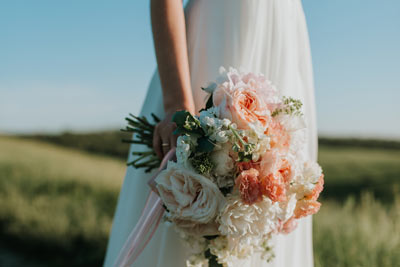 Special thanks to Jennifer Meredith for updating this section:
Special thanks to Jennifer Meredith for updating this section:
Bridal gowns are less ornate that the traditional Western style dress. Bridal gowns are less ornate that the traditional Western style dress. Most small town have wedding shops so there is now more choice. Coloured dresses are becoming more common, but ivory or white is still more popular.
The mother of the bride and the mother of the bridegroom do confer on outfit colours, and they take into consideration the bridesmaid colours. The waistcoat and coloured handkerchief that the groom and best man sometimes wears is normally the same colour as the bridesmaid’s dresses.
Brides rarely kept their gowns for their daughters; they either sold them or had the fabric used to make their first child’s Christening gown. Wear “something old, something new, something borrowed and something blue, and a lucky sixpence in your shoe,” as in the old English rhyme.
Lisa Schultz told us of her family’s tradition: “All of the brides on my mother’s side of the family have carried over their arms horseshoes for good luck. The horseshoes, rather than being actual metal plates, are crocheted and a long ribbon is attached in a loop from end to end. The horseshoe is worn upside down over the arm of the bride during the wedding to bring luck to the marriage.”
Today, it is the custom to have many young bridesmaids instead of adult attendants. The bride pays for her attendant’s outfits.
The bridegroom rarely wears a tuxedo – only at a very large, formal wedding. Business suits are normal. The bridegroom has a best man, who also wears a business suit.
The mother of the bride and the mother of the bridegroom never confer on outfit colors, nor do they take into consideration the bridesmaid colors.
Cakes
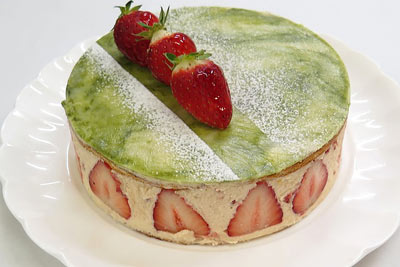 In medieval England, guests brought small cakes and piled them in the center of a table, challenging the bride and groom to kiss over them.
In medieval England, guests brought small cakes and piled them in the center of a table, challenging the bride and groom to kiss over them.
Wedding cakes are less elaborate in design. The wedding cake is a rich fruitcake topped with marzipan; the top tier is called a “christening cake” to be saved for the birth of the first child. (Old fashioned fruitcake dates back to the days before leavening and sugar.)
Chocolate or sponge cakes have become more popular in recent years.
Resources and References
Special thanks to Lois Pearce, Master Bridal Consultant of Hamden, Connecticut, for her time and energy gathering the majority of information used here. We also wish to thank the Association of Bridal Consultants for their assistance.
Please note: The information contained in this category should be considered general in nature. We believe it to be true and an accurate representation of some of the customs and traditions for this country or religion. Information provided by individuals and organizations is assumed to be correct.You are welcome to email us at join@weddingdetails.com with any suggestions for changes, additions or deletions.

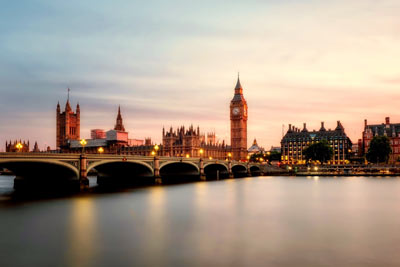 Major Religious Beliefs
Major Religious Beliefs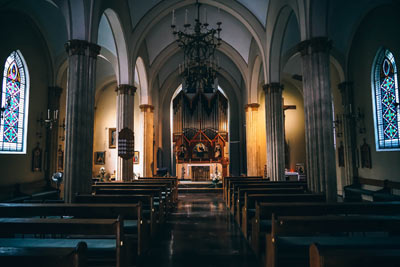 The Wedding Procession
The Wedding Procession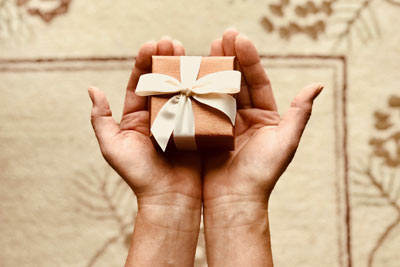 Wedding Gifts
Wedding Gifts